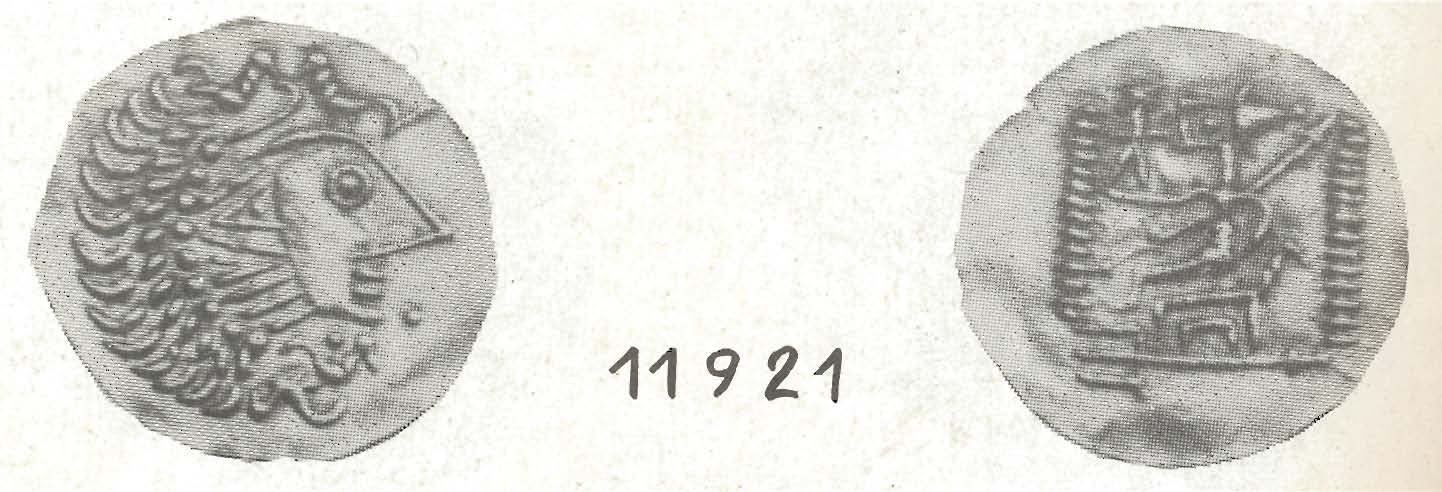
The long history of the printed word in the Georgian language began in Rome in 1629, when the Vatican’s recently-established Sacred Congregation for the Propagation of the Faith published the Dittionario giorgiano e italiano for the use of Catholic missionaries in Georgia. As Georgia endured a series of wars and invasions over the next 200 years, book publication averaged less than one title annually. By the early 20th century, over 100 books were being published in Georgian per year, but the true explosion of Georgian book publishing occurred after the absorption of independent Georgia by (what would become) the Soviet Union in 1921. The figures provided by V. Uznaże on page 4 of his Istoriia tiflisskoi publichnoi biblioteki, 1846-1917 g. (Tbilisi, 1957; U of I Library call number Oak Street 027.24795 U99i) are as follows: 6,200 books published in Georgia in any language from 1629-1920, compared with 43,000 (30,000 of them in Georgian) published between 1921 and 1956.
Coverage of the publishing output of Georgia and Georgians is generally quite good. One highlight is the extensive amount of material (over 1,000,000 records) indexed in the National Parliamentary Library of Georgia’s e-catalogues and analytical bibliographies. On the other hand, unlike other former Soviet republics, there does not appear to have been much activity associated with the creation of bibliographies of bibliographies. Therefore scholars may need to use older, more general sources such as I. M. Pul’ner’s “Materialy dlia bibliografii bibliografii Kavkaza” (Sovetskaia etnografiia, 1936 no. 4-5, pp. 230-270) or L. Melik’set’-Beg’s five-volume Masalebi amierkavkasiis bibliograp’iis bibliograp’iisat’vis = Materialy dlia bibliografiia Iugo-Kavkaza (T’bilisi, 1937-1940), or consult the sections of more recent Georgian bibliographies organized by subject that function as bibliographies of bibliographies. One source for more information about the history of Georgian bibliography is G. Bakraże’s “Gruzinskaia bibliografiia v nashi dni” (Sovetskaia bibliografiia, 1946 no. 1, pp. 62-74), while several articles on Georgian national bibliography were published by Erich Richter in German and Austrian library journals during the 1970’s and 80’s (contact the Slavic Reference Service for details).
Mention should also be made of David Marshall Lang’s Catalogue of Georgian and other Caucasian printed books in the British Museum (London, 1962; U of I Library call number IAS Slavic–Central Asian Reference 016.89996 B77c) and David Barrett’s Catalogue of the Wardrop Collection and of other Georgian books and manuscripts in the Bodleian Library (Oxford, 1973; U of I Library call number Main Stacks 017.142 Ox2ca). These catalogs contain brief citations to the few thousand holdings at the British Library and Oxford that constituted one of the West’s major resources for the study of Georgia and the North Caucasus at the time of their publication, and can still be of great value to scholars.
Several of the sources described below contain citations to materials published in Abkhaz, Ossetian, and other languages of the former Georgian SSR. Materials in these languages may also, however, be the focus of future pages on the bibliography of the North Caucasus. More general and more specialized works, such as M. M. Miansarov’s Bibliographia caucasica et transcaucasica : essai d’une bibliographie systématique relative au Caucase, à la Transcaucasie et aux populations de ces contrées (St.-Pétersbourg, 1874-1876; History, Philosophy Newspaper Library FILM 016.9479 M58b) and G. Żnelaże’s Iranis bibliograp’ia : istoria = Bibliografiia Irana : istoriia (T’bilisi, 1981; IAS Slavic Central Asian Reference 016.955 Z7i) may also be covered on future pages, along with bibliographies confined to a specific subject area, encyclopedias, resources for Georgian archives, biographical sources, and other reference works. Some excellent resources (such as Kavkasiis muzeumisa da Akad. S. Janašias saxelobis Sak’art’velos saxelmcip’o muzeumis gamoc’emat’a bibliograp’ia (1875-1964) = Bibliografiia izdanii Kavkazskogo muzeia i Gosudarstvennogo muzeia Gruzii imeni S. N. Dzhanashia, T’bilisi, 1966; IAS Slavic Central Asian Reference 015.4795 T44b) have been excluded on the grounds that they are not truly national in scope. For more information about these (or any other) resources, please contact the Slavic Reference Service.
